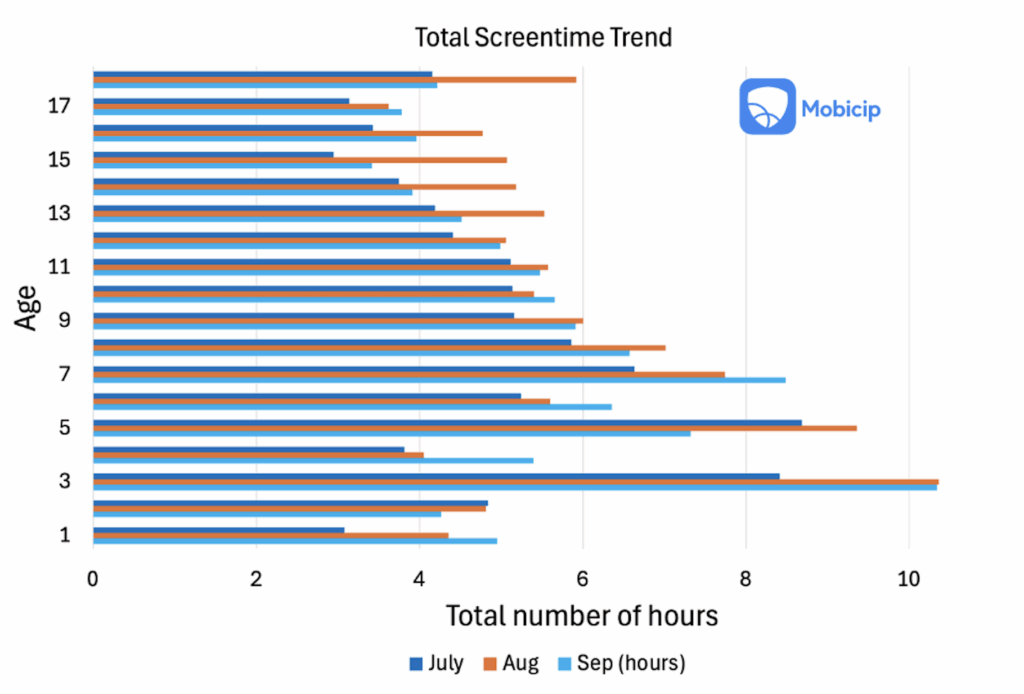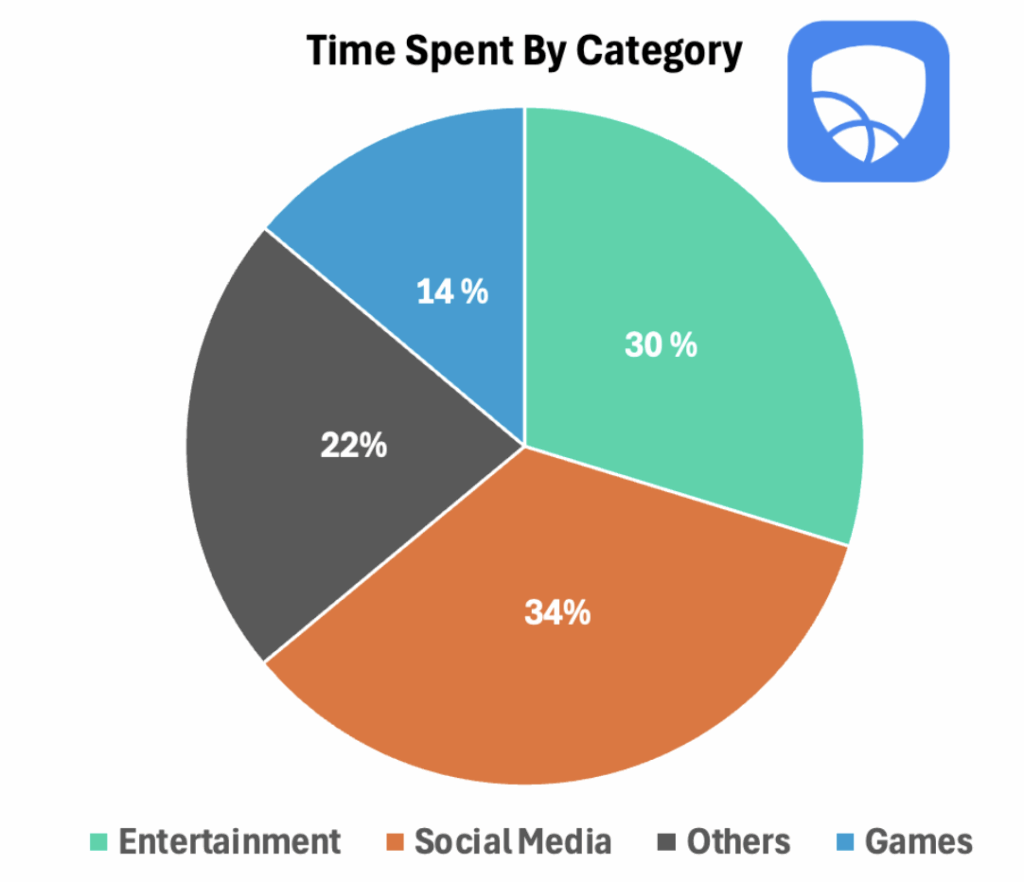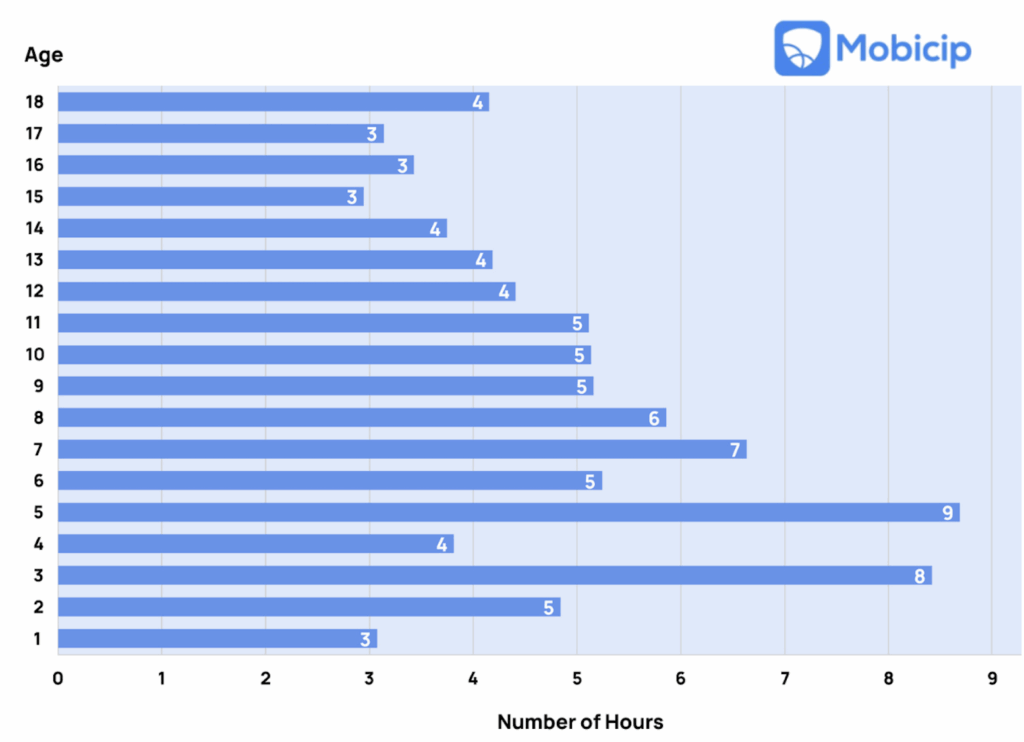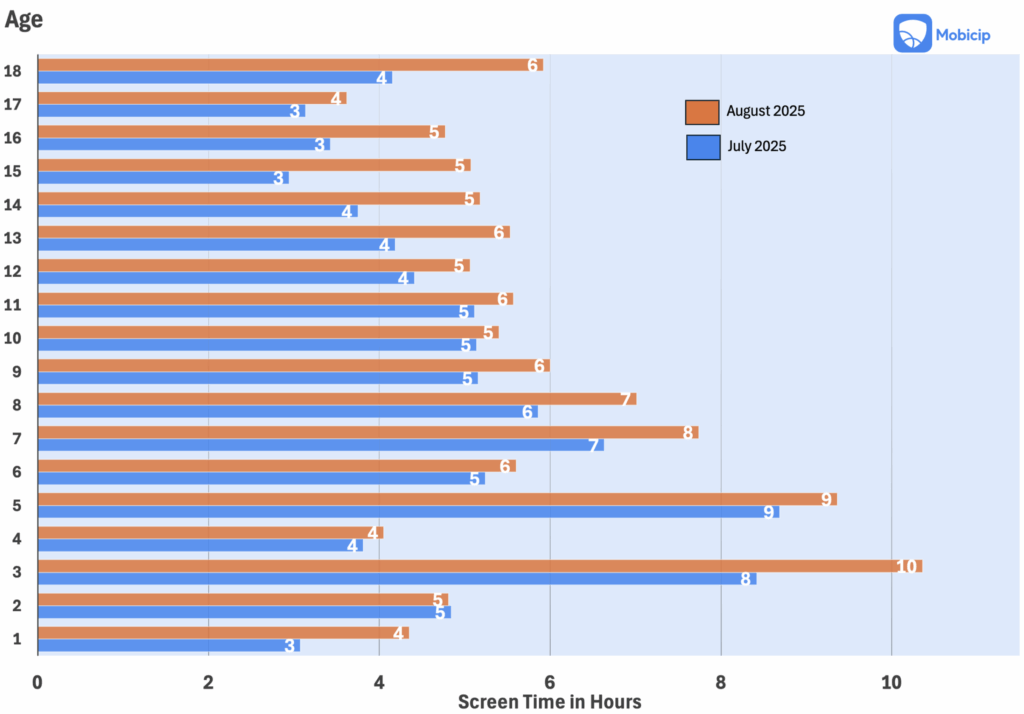Inside Kids’ Screens: Sep 2025 Trends from Mobicip
Each month, Mobicip analyzes anonymized screen time data from thousands of families to uncover how children and teens are spending time on digital devices. From the most popular apps to platforms with the highest usage, this report offers actionable insights into current trends, age-specific behaviors, and emerging parental concerns. Our goal is to help families make informed decisions and support healthy digital habits for kids in an evolving tech landscape.
Total Screentime Versus Age

Overall pattern
- Younger children (ages 1–3): Screentime rises sharply in this group because many toddlers are introduced early to phones or tablets. Parents often use digital media to entertain or soothe them — for example, showing cartoons, rhymes, or interactive videos. Since toddlers are home most of the time and not yet in structured learning environments, their exposure can easily stretch to several hours a day. The peak at age 3 reflects a stage when children become more curious and can watch or play on devices for longer stretches without losing interest.
- Ages 4–10:In early and middle childhood, screentime stabilizes but remains moderate. This is the stage when children start school and gain more structured routines. Some screentime becomes educational — online learning tools, interactive homework, and supervised entertainment — but parental controls and schedules usually limit excessive use. The small fluctuations likely reflect differences in family routines, school workload, and how much independence the child has with technology.
- Ages 11 and up: From preteens onward, there’s a gradual decline in total screentime hours. This may seem surprising since teenagers are often assumed to be glued to their phones. However, the data likely reflects a shift from passive viewing (videos, games) to purposeful use (social media, chatting, studying). Teens also spend more time in school, extracurricular activities, and social settings outside the home, reducing long stretches of screen-based entertainment. Older teens, especially those preparing for exams or college, may self-regulate due to academic pressure.
Month-to-month variations
The trend across July, August, and September aligns closely with the school calendar and seasonal routines.
- July and August: These months often coincide with summer vacations, giving children more free time and flexibility. With less structured schedules and more leisure hours, both entertainment and gaming screentime tend to rise. Parents may also be more lenient during holidays, allowing longer screen sessions to keep kids occupied.
- September: The noticeable dip reflects the return to school and a more regulated daily routine. School reopening brings homework, early bedtimes, and after-school activities — naturally cutting down available screen hours. Parents also tend to enforce stricter limits once classes resume.
Screentime by Category

- Entertainment: dropped from 36 to 30 hours from August to September. Kids spent less time on streaming and video content, possibly due to a shift in focus back to schoolwork or structured routines after a break.
- Social Media: increased from 30 to 34 hours from August to September. Social media usage rose, perhaps because kids were reconnecting with friends, catching up on trends, or spending more time online socially as other leisure activities decreased.
- Others: rose slightly from 21 to 22 hours. This small increase could reflect steady use of educational or utility apps, which are less sensitive to seasonal changes.
- Games: fell sharply from 30 to 14 hours. This may indicate reduced gaming time as school resumed, or a seasonal shift where kids prioritized social media and entertainment over longer gaming sessions.
Most Blocked Apps
Most blocked apps among kids are dominated by social media, video streaming, and dating platforms.
- TikTok, Instagram, Snapchat, Twitter, Facebook, WhatsApp, and Telegram top the list, reflecting concerns about cyberbullying, privacy, and addictive features.
- Streaming apps like YouTube, Netflix, Hulu, and Amazon Prime Video are also frequently restricted to prevent overuse and exposure to inappropriate content.
- Dating apps such as Tinder and MeetMe are blocked due to safety risks from interacting with strangers.
- Even some games and creative apps, like Roblox and CapCut, appear on the list because of in-app interactions or content-sharing features.
Why Are Screen Time Reports Important?
Children’s digital habits shift as technology changes, and these patterns reveal where their time and attention go. Regular updates give parents a clearer view of how kids use devices and which platforms are most engaging. With this understanding, families can guide screen time toward more positive experiences, set boundaries that stick, and stay ahead of potential risks. We’ll keep sharing Screen Time Reports each month to help make screen use smarter and safer.






